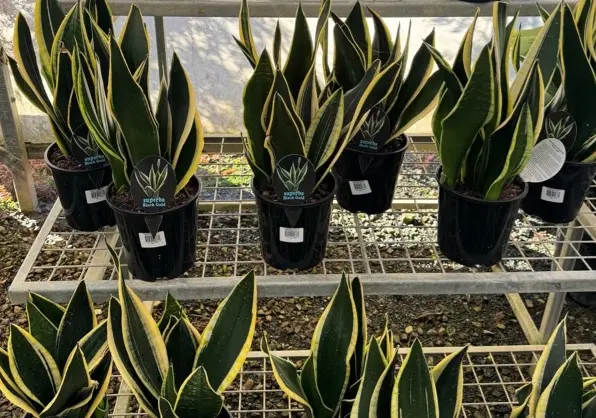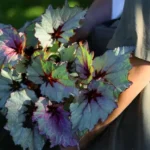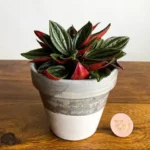If you’re looking for a bold, low-maintenance houseplant with personality, the Sansevieria ‘Black Gold’ is an outstanding choice. Popular among both seasoned plant collectors and curious newcomers, this striking variety of snake plant is known for its dark, almost black-green leaves edged in radiant gold. Beyond its elegant appearance, it’s also wonderfully easy to care for and tolerant of a variety of indoor conditions, making it ideal for homes, apartments, or offices.
What Makes Sansevieria ‘Black Gold’ Unique?
The ‘Black Gold’ cultivar belongs to the Sansevieria trifasciata species, sometimes referred to as mother-in-law’s tongue. What sets this variant apart is its dramatic color contrast: the sword-like leaves are rich green, so dark they appear almost black, bordered with vibrant golden yellow margins. This sophisticated color palette makes it an eye-catching addition to both minimalist and richly decorated interiors.
The upright growth pattern and architectural shape of ‘Black Gold’ also lend it a modern, clean look. It can grow to about 2 to 3 feet tall indoors, and it’s commonly displayed solo in a decorative pot or grouped among other low-light houseplants for a diverse display.
Light Requirements
Sansevieria ‘Black Gold’ is incredibly adaptable in terms of lighting conditions, but proper placement can make a significant difference in its growth and color vibrancy.
- Bright, indirect light: This is ideal. It helps maintain the bright gold edges and encourages steady, robust growth.
- Low light: The plant will tolerate low light, but the yellow margins might fade slightly and growth will slow.
- Direct sunlight: While some morning sun is fine, prolonged exposure to harsh sunlight can cause leaf scorching or discoloration.
Place your plant near an east-facing window or a few feet away from a south or west-facing window with filtered light for best results.
Watering and Humidity
Sansevieria species, including ‘Black Gold’, are drought-tolerant succulents that thrive with infrequent watering. Overwatering is the most common mistake with these plants and can lead to root rot.
- Water sparingly: Allow the soil to dry out completely before watering again. In general, watering once every 2-3 weeks is sufficient during the growing season (spring and summer).
- Reduce in winter: Water even less in the dormant months—perhaps once a month, depending on your indoor climate.
- Avoid soggy soil: Ensure the pot has a drainage hole and never let the plant sit in standing water.
Humidity is not a major concern for ‘Black Gold’. It thrives in average room humidity. However, avoid placing it directly next to heating vents or air conditioners, which can cause the leaf tips to dry out.
Soil and Potting
Like many other succulents, Sansevieria ‘Black Gold’ appreciates well-draining soil. A cactus or succulent potting mix is ideal because it prevents moisture buildup around the roots. You can also make your own mix by combining:
- 2 parts potting soil
- 1 part perlite or coarse sand
- 1 part orchid bark (optional, for added aeration)
Repotting every 2-3 years is usually sufficient. These plants enjoy being slightly root-bound, so don’t rush to move them into a larger pot unless the roots are beginning to push through the drainage holes.
Temperature and Environment
Sansevieria ‘Black Gold’ is a tropical plant and does best in typical indoor temperatures:
- Ideal range: 65°F to 85°F (18°C to 29°C)
- Minimum temperature: Avoid temperatures below 50°F (10°C). Cold drafts and sudden temperature drops can damage the leaves.
If placing your snake plant near a window that gets chilly in winter, make sure it’s not touching the glass and monitor for any signs of cold stress (softening leaves or discoloration).
Fertilizing and Feeding
Sansevieria ‘Black Gold’ doesn’t need heavy feeding to thrive. In fact, over-fertilizing can do more harm than good. If you choose to fertilize, follow these guidelines:
- Use a balanced liquid fertilizer: A half-strength, all-purpose houseplant fertilizer works well.
- Feed during active growth: Apply once a month during spring and summer.
- Skip feeding in fall and winter: When growth slows naturally, the plant doesn’t need nutrients.
Common Issues and Troubleshooting
Though remarkably resilient, Sansevieria ‘Black Gold’ can occasionally develop issues if its care routine is off track. Here are some common concerns and how to fix them:
- Soft or mushy leaves: Usually a sign of overwatering leading to root rot. Remove the plant from its pot, inspect the roots, and cut away any black or mushy parts. Repot in dry, fresh soil.
- Brown tips: Typically from dry air, under-watering, or exposure to cold. Trim the tips and adjust your care routine.
- Faded colors: If the gold edging becomes less vibrant, it may be from insufficient light. Move the plant to a brighter spot with indirect sunlight.
Propagation Tips
Sansevieria ‘Black Gold’ can be propagated through leaf cuttings or division.
Division:
This method is the easiest and most reliable. When repotting, separate offshoots or “pups” from the main plant using a clean, sharp knife. Plant the pups in their own pots with fresh soil.
Leaf Cuttings:
Cut a leaf into sections (around 3 inches each), let them callous for a day or two, and stick them upright in moist, well-draining soil. Keep in bright, indirect light and be patient—root development can take several weeks.
Pest Management
‘Black Gold’ is relatively pest-resistant but can occasionally attract insects, especially if stressed or overwatered.
- Mealybugs: Look for white fuzzy masses at the leaf bases. Remove them with a cotton swab dipped in rubbing alcohol.
- Spider mites: These tiny pests create fine webs and can cause stippling. Increase humidity and wipe leaves with insecticidal soap.
- Fungus gnats: Attracted to moist soil. Let the soil dry fully between waterings and use sticky traps if needed.
Benefits of Growing Sansevieria ‘Black Gold’
Besides its visual appeal, this plant brings a variety of additional benefits:
- Air purification: Studies by NASA found that Sansevieria plants are capable of removing indoor air pollutants such as formaldehyde and benzene.
- Low maintenance: Ideal for people with a busy lifestyle or beginners just starting their plant journey.
- Pet caution: While beautiful, Sansevierias are toxic to cats and dogs if ingested, so keep them out of reach of curious pets.
Conclusion
Sansevieria ‘Black Gold’ combines striking aesthetics with hassle-free care, making it a houseplant powerhouse. Whether you’re dressing up a corner of your living room, decorating an office, or simply adding a touch of greenery to your bedroom, this plant delivers beauty with minimal demands. With the right light, an occasional watering, and a little love, ‘Black Gold’ will reward you with years of bold, gold-edged charm.
References
- Aslam, M. M., Jamil, M., & Danish, S. (2018). Houseplants: Indoor Air Purification and Human Health. Environmental Science and Pollution Research, 25(3), 1-10.
- Costa, C. A., & Hardy, R. A. (2020). Principles of Indoor Plant Care (3rd ed.). Urban Botanicals Press.
- Missouri Botanical Garden. (2023). Sansevieria trifasciata ‘Black Gold’. Retrieved from https://www.missouribotanicalgarden.org/








